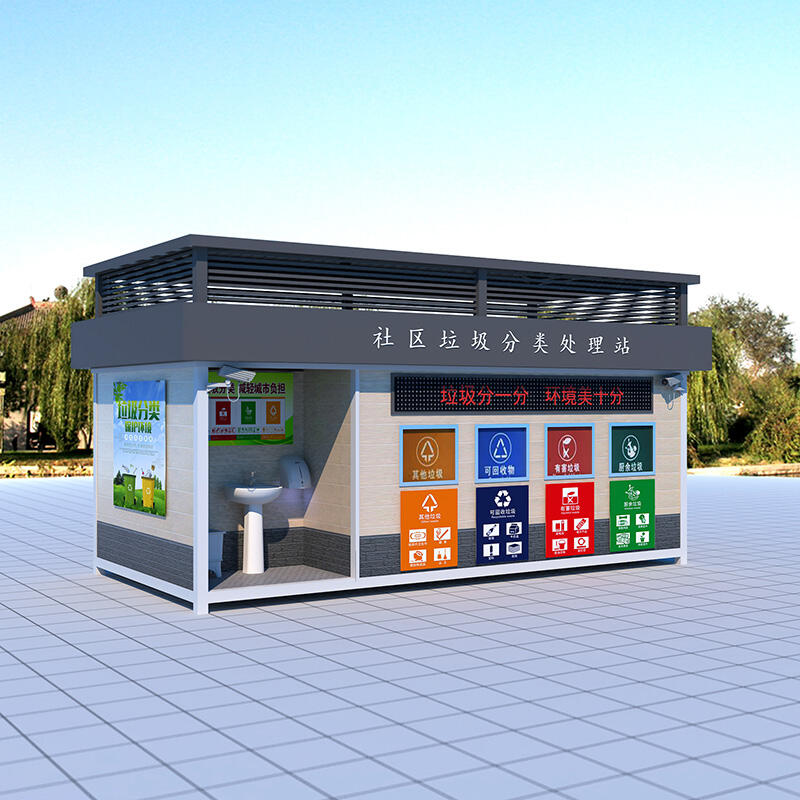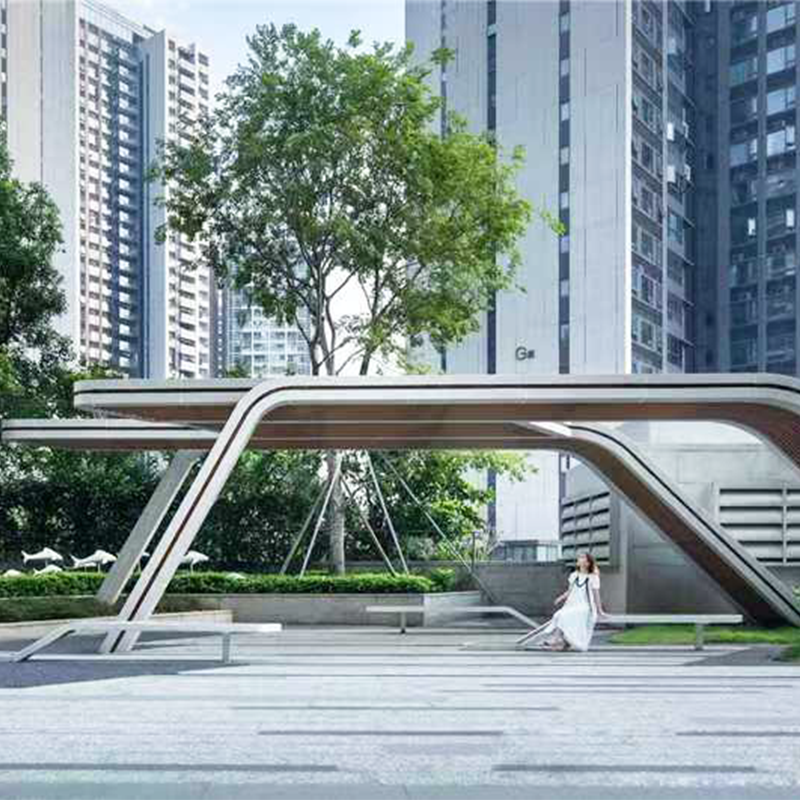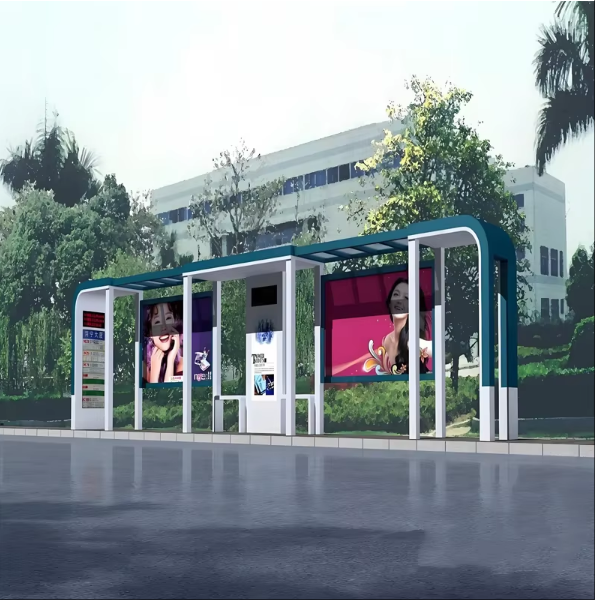Avansert produksjonsteknologi for reklameskilt
Utviklingen av reklameskilt har blitt merket av en betydelig overgang fra tradisjonelle håndlagde metoder til moderne digitale teknikker. Tidligere ble skilt laga manuelt, med kunstnere som pliktet seg med å opprette hvert element håndvaskt. Likevel, som teknologien utviklet seg, har digitale verktøy ført til ukommet effektivitet i prosessen. Som et resultat har produksjonen blitt raskere, billigere og mer fleksibel, noe som lar bedrifter forblir konkurransedyktige og ressponsfulle mot markedstrender. Denne endringen har transformert håndlagde reklameskilt til nøyaktige, tilpassede design som kan produseres raskt i stor skala.
En slik teknologisk fremgang er innføringen av Datamaskinstyrt Tegning (CAD) i skiltindustrien. CAD lar designere opprette, endre, analysere og optimere en design enkelt, og gir høy nøyaktighet og stimulerer kreativitet. Designere kan visualisere det ferdige produktet i en virtuell miljø før det går i produksjon, noe som drastisk reduserer sannsynligheten for feil og forbedrer tilpassede skiltløsninger for bedrifter. Denne evnen akselererer ikke bare designprosesser, men oppmuntrer også innovasjon, og tillater en mangfoldig rekke reklameskilt som effektivt fanger forbrukernes oppmerksomhet.
En annen betydelig innovasjon innen moderne skiltproduksjon er bruk av CNC-ruter og laserkjøppers. Disse verktøyene har revolusjoneret bransjen ved å gjøre det mulig å lage intrikate design som ville vært nesten umulig å oppnå manuelt. CNC-ruter tilbyr nøyaktig skjæring og formgiving av tre, metall eller plast, mens laserkjøppers legger til evnen til å produsere komplekse mønstre med minimal materialeforbruk. Dette samarbeidet forsterker betydelig produksjons-effektiviteten og utvider mulighetene for design, og støtter utviklingen av unike og øynefangende bedriftsskilt, fra reklameskilt til tilpassede bensinstasjonskilt for bedrifter.
Nøkkeltrekkene som driver moderne reklameskiltproduksjon
Digital utskrift: Fart, fleksibilitet og høyoppløsnings output
Digital trykk har dramatisk transformert produksjonen av reklameskilt, og forbedret farten og effektiviteten. Denne teknologien gjør det mulig å trykke raskt med vibrante farger, og oppfyller kravet om kortere leveringstider i skiltnæringen. Versenligheten til digital trykk gjør det mulig å bruke på ulike underlag, noe som gjør det ideelt for å produsere tilpassede skilt for bedrifter fra små plakater til store reklameplakater. Dessuten gir moderne digitale trykkmaskiner høyoppløsningsutskrifter, slik at skilt ikke bare er leselige men også visuelt attraktive. Uansett om det er en liten bedrift som trenger butikkpromosjoner eller en stor korporasjon som søker påvirkende reklameskilt, så lever digital trykk presisjon og kvalitet.
UV-trykk: Varighet og vejrstandsdyktighet
UV-trykkteknologi er kjent for å produsere robuste og vejrbestandige skilt. Ved å bruke ultraviolett lys for å feste eller tørre inka som det trykkes, oppretter UV-trykk en binding med materialet som er unikkelig varig. Denne prosessen er spesielt fordelsfull for skilt som blir utsatt for elementene, ettersom den forsterker motstandsdyktigheten mot bleking og krafning. UV-trykk er egnet for både innendørs og utendørs anvendelser, og tilbyr en pålitelig løsning for bedrifter som trenger reklameskilt med langt holdbarhet. Studier har vist at UV-trykte skilt beholder sin fargerikdom og integritet, selv i strenge miljøforhold, og beviser deres effektivitet i ulike reklamekampanjer.
Storformattrykk: Foranderlig innendørs og utendørs skilt
Storformatstrykk har revolusjonert både innendørs og utendørs reklame ved å gjøre det mulig å produsere overdimensionerte reklamer som vegggrafikk og reklameplakater. Denne teknologien lar bedrifter lage påvirkende budskaper og engasjere forbrukere effektivt i områder med høy trafikk. Størrelsen og kvaliteten til storformatstrykk forbedrer synligheten og merkevaregjenkjenning, noe som gjør det til et strategisk verktøy i markedsføring. Statistikk viser at storformatreklamer øker betydelig forbrukerengasjement og merkevaregjenkjenning, noe som bekrefter deres effektivitet som reklamemedium. Ved å transformere vanlige rom til imponerende reklameflater spiller storformatstrykk en avgjørende rolle i moderne merkevarestrategier.
Bærekraftighet i avansert skiltproduksjon
Miljøvennlige materialer: Biotilbøyelige og gjenbruksvennlige vinyl
Kampen for miljøvennlige materialer i skiltindustrien har aldri vært sterke, med biologisk nedbrytbart og gjenbrukbart vinyl som tar sentral plass i produksjonen. Denne voksende etterspørselen speiler en felles endring mot bærekraftige praksiser som minimerer miljøpåvirkning. Ved å bruke biologisk nedbrytbare materialer sikres at skiltene nedbrytes naturlig, noe som reduserer avfallsdeponiforbruket betraktelig over tid. Gjenbrukbart vinyl støtter ikke bare gjentatt bruk, men begrenser også ressursutsliden, i tråd med bredere bærekraftsmål. Ifølge en nylig undersøkelse av Green Business Network foretrekker 78% av konsumentene merker som prioriterer bærekraft, noe som viser hvordan miljøbevisste valg i skilteproduksjon kan forsterke merkevaren og kundeplikten.
Energiforeldre trykkprosesser: Redusert karbonfotavtrykk
Framsteg i energieffektive trykkteknologier har betydelig redusert karbonfotavtrykket til skiltproduksjon. Ved å innføre prosesser som besparener energi, kan produsenter tydeligvis redusere sin miljøpåvirkning. Teknikker som lean-produksjon, som forenkler produksjonen og eliminerer avfall, spiller en avgjørende rolle i å forbedre energieffektiviteten. For eksempel rapporterte en studie utført av Instituttet for Industriell Produktivitet en reduksjon på 30% i energiforbruk blant produsenter som adopterte lean-teknikker. Disse praksisene støtter ikke bare miljømessig bærekraft, men forbedrer også overskudd ved å senke energikostnadene, noe som viser at miljøvennlige operasjoner også kan være økonomisk fordelsomme.
Rollen av LED-teknologi i bærekraftig skiltemaking
LED-teknologien har revolusjonert måten på hvilken skiltning blir opplyst, og tilbyr en energieffektiv alternativ til tradisjonell belysning. Med lavere strømforbruk reduserer LEDs betydelig energibruk, noe som fremmer bærekraftighet. Varens varighetsverdi og lave vedlikeholdsbehov for LED-skiltninger forsterker ytterligere deres attraktivitet. For eksempel kan en konvensjonell glødlampe vare noen tusen timer, mens en LED-lampe kan fungere i opptil 25,000 timer eller mer, og gi betydelige sparemidler på erstatninger og arbeidskostnader. Flere selskaper har vellykket integrert LED-teknologi i sin skiltning, noe som forsterker både merkevaresynlighet og reduserer deres miljøfotavtrykk, en dobbelt fordeler som ekoker seg over næringslandskapet.
Integrasjon av smart teknologi: IoT og interaktiv skiltning
Integreringen av IoT-teknologi i skiltet har revolusjonert måten bedrifter kommuniserer med sin publikum på. IoT-aktive skilt kan tillate interaktivitet og oppdateringer i sanntid, noe som betydelig forbedrer brukerengasjementet. Eksempler finnes i ulike industrier, fra detailhandel til transport, hvor interaktive skilt effektivt fanger kundenes oppmerksomhet. Forutsagt trender i reklamelandskapet tyder på at smarte skilt vil fortsette å utvikle seg, og tilby ennå mer sofistikerte løsninger. Disse utviklingene inkluderer personalisert innhold og avansert dataanalyse for tilpasning, og setter nye standarder for reklameskilt med en blanding av teknologisk innovasjon og brukerfokusert design.
3D-skriving og additiv fremstilling: Neste frontiere
3D-skriving er på vei til å transformere skiltproduksjonen ved å tilby muligheter for tilpassede skildesigner med reduserte leveringstider og mindre materialeavfall. I motsetning til tradisjonelle metoder lar additiv fremstilling opprette komplekse former og strukturer som tidligere var umulige å oppnå. Ledende produsenter i reklameskiltbransjen har allerede tatt i bruk 3D-teknologien, og lykkes med å bruke den for å utvide grensene for hva som er mulig innen skildesign. Ved å integrere denne nyeste teknologien kan bedrifter forvente å se ikke bare estetiske forbedringer, men også operasjonsmessige effektiviteter som setter nye standarder for tilpassede skiltløsninger i næringslandskapet.
Kunstig intelligens-drevne designtøy: Forbedrer tilpasning og nøyaktighet
AI-drevne designverktøy omformer skiltets designprosess ved å tilby data-baserte innsikter for å forbedre tilpasning og effektivitet. Disse verktøyene tilbyr potensial for å forbedre designnøyaktigheten betydelig, samtidig som sannsynligheten for feil under produksjon reduseres. Flere bedrifter har innført AI-verktøy i sine kreative prosesser og opplevd imponerende resultater. For eksempel kan en reklamebyrå bruke AI for å analysere forbrukerpreferanser, og tilpasse skildesigner for å rikte seg mot målgrupper på en mer effektiv måte. Med fremdriften i AI-teknologien forventes integreringen av AI i skiltproduksjon å heve kvaliteten og tilpasningen av reklameskilter, og markerer et betydelig skritt mot mer nøyaktige og individuelle merkeløsninger.
Anvendelser av avansert produksjons teknologi i reklameskilter
Tilpasset bedriftsskilt: Tilrettelagt løsninger for merker
Selvstilte bedriftsskilt spill en avgjørende rolle i å definere og forsterke merkevareidentiteten. Moderne teknologi lar bedrifter designe skreddersyde skilt tilpasset deres spesifikke behov, noe som hjelper til å opprette en unik visuell tilstedeværelse. Bedrifter har nå en rekke tilpasningsmuligheter tilgjengelig, inkludert valg av materialer som metaller, plast og miljøvennlige alternativer. Det finnes også mange designvalg som strekker seg fra ren, moderne minimalisme til fargerike, opptakelsesverdige grafikk, som tilpasser seg ulike merkevareestetikker. Vellykkede bedrifter som Coca-Cola og Apple har effektivt brukt selvstilte skilt, ved å utnytte unike design for å etablere sterke merkevareidentiteter og bli lett genkjenlige for forbrukere over hele verden.
Bilhuller og utendørs reklame: Maksimere synlighet
Bilhuller tilbyr en innovativ løsning for mobil reklame, og øker betydelig merkevaresynlighet. Disse bevegelige reklameplakater når et bredt publikum og gir en kostnads-effektiv kanal for å fange oppmerksomheten på bygatene. Utendørs reklameskilt, spesielt i trafikktette områder, har lenge vært faste elementer i reklameverdenen, og trekker oppmerksomhet med livlige, storeformate visuelle elementer. Integrasjonen av digitale trykkteknologier i produksjonen av skiltforsterker deres visuelle tiltrekningsevne, og tillater levende og varige grafikk som klarer seg mot vær og tid. Ifølge en studie av Outdoor Advertising Association of America, kan ROI på bilhuller nå opp til 400%, og effektiv utendørs signalisering kan øke en merkevares synlighet med mer enn 40% grunnet dets brede nynningskapasitet.
Arrangementsskilt og handelsshow-signalering: Å gjøre en inntrykk
Arrangementsvisninger og messeskal er avgjørende for å få deltakerenes oppmerksomhet og forbedre merkevarehuskeligheten. Disse visningene fungerer som et fokuspunkt på arrangementer og utstillinger, og lar et dypt inntrykk på besøkende. Avanserte teknologier som digitale og UV-trykkeri tillater høyoppløselige, tilpassede grafikk som kan kommunisere en merkes medling effektivt. For eksempel bruker selskaper som Samsung og Google immersive, teknologidrevne båsdesigner for å stikke ut i tette messer, ved å bruke fremgangende produksjonsteknologier for å gjøre deres visninger engasjerende og memorabelle. Ifølge rapporter øker slik strategisk skil such deltakerengasjement med opp til 60%, og sikrer at bedrifter gjør en betydelig innflytelse i konkurrerende miljøer.









